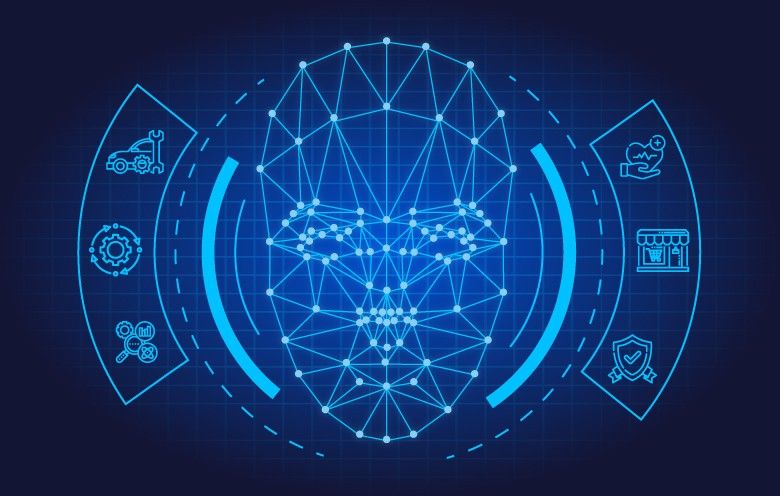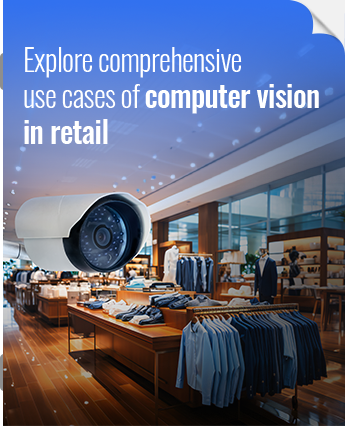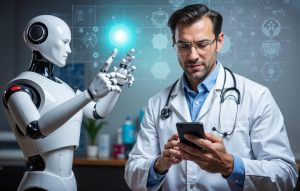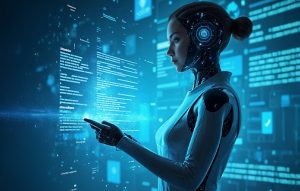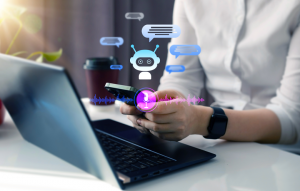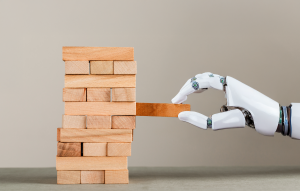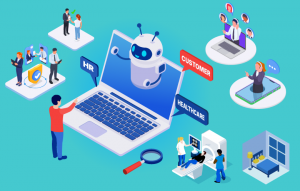Facial recognition and emotion detection are AI-based systems used for verification and recognition purposes. Artificial intelligence enables these systems to recognize faces and voices as well as analyze emotions.
These technologies are similar yet slightly different from each other. Facial recognition is a method of recognizing and checking a person’s identity using their face. It helps to identify people in photographs, videos and in-person as well. It maps a person’s facial features and stores them as a faceprint using the biometric software.
On the other hand, emotion detection identifies and analyzes human emotions. It helps to detect how someone feels by extracting information about their emotional state.
Having known what facial recognition is, let’s now understand why we need this technique and how it helps companies
Facial recognition software is one of the most competent surveillance tools ever made. Though it is commonly used to lock smartphones or arrange pictures, this tool has the potential to accomplish bigger purposes. And the way companies are using these tools, will impact our lives significantly.
Functioning of this technique starts with camera installation over the place that needs to be under surveillance. Multiple installed cameras continuously take pictures and record videos when they detect movement.
How face recognition software works
Facial recognition systems are categorized under four types of technologies
1. Face detection
It is an AI-based technology that helps to identify human faces in images. It uses facial expressions to identify parts of an image or video to determine age, gender and emotions. This technology can be applied to fields like security, biometrics, law enforcement, etc., for tracking and surveillance purposes.
2. Facial analysis
Facial analysis software maps facial features by measuring the space between the eyes, the gap between nose and lips, the shape of chin, etc., converts them mathematically, and stores them as ‘faceprints’.
3. Facial recognition
It is a method used to confirm an individual’s identity using their face. It can be in a photograph, video or in real-time. It also helps in verification processes. As mentioned before, it is a category of biometric security.
4. Emotion analytics
The emotion analytics software analyzes a person’s facial expression. It records their mood, attitude and emotional personality by analyzing the data collected on their verbal as well as non-verbal communications. Emotional analytics tells what people are feeling and why. It provides deep and contextual understanding with valuable insights to identify and resolve issues.
The global facial recognition market size was valued at $3.83 billion in 2020, and is projected to reach $16.74 billion by 2030, growing at a CAGR of 16.0% from 2021 to 2030.
– Allied Market Research
Industry-wise uses of facial recognition and emotion detection
Healthcare
Facial recognition helps healthcare facilities in taking better care of patients. Healthcare providers are using it to detect emotions in patients and identify genetic diseases. Companies are developing applications that use this technology to ensure that people take medication as prescribed.
Facial recognition also helps the healthcare facilities in
- Check-in and checkout processes for patients
- Staff entry and exit
- Access control of the premises
- Patient monitoring
- Diagnosis, etc.
Also, caretaking robots equipped with face recognition and emotion detection take care of patients in hospitals and at home. Since biometric technology is becoming reasonable, its adoption in the healthcare sector is definite to increase.
Retail
Facial recognition helps retailers in multiple ways:
- Identify shoplifters and send alerts to store security.
- Analyze customer surfing and buying patterns and give personalized offers.
- Verify payments and prevent identity fraud.
Automotive
Car manufacturers all over the globe are focusing on manufacturing automobiles that are safe to drive and provide a personalized experience for users. Moreover, the use of AI, ML and deep learning techniques in facial recognition systems understand human emotions. It ensures driver safety by analyzing their facial expressions to detect fatigue or drowsiness and send alerts. The system prompts the driver to stop for a while, take a coffee break, play music or adjust the temperature if it detects an anomaly.
Market research
Conventional market research companies use verbal methods in the form of surveys to understand the demands and needs of customers. They assume that customers’ answers would correspond to their future buying actions. However, it may change with the changing situations. Apart from this, the industry also employs behavioral methods which allow users to act while trying a product. These methods are more accurate in comparison to verbal methods.
The other method is a behavioral method where companies capture video feeds of the user interacting with a product. They analyze the video manually to observe a user’s reactions and emotions. This method is helpful, but it is tedious and time-taking. Moreover, it increases the overall cost.
With the arrival of AI-enabled facial emotion recognition systems, it has become easy for market research companies to automate video analysis and detect facial expressions of their users. This saves time and labor and minimizes the cost as well. Facial recognition systems help market research companies to scale their data collection efforts.
Benefits of facial recognition
Increases security
Facial recognition improves safety and security in places like airports and banks. It identifies potential threats and sends alerts to supervisors to take necessary actions. It is not only quicker, but even more accurate as compared to manual processes.
Reduces crime
The technology helps in preventing fraud and identifying people with criminal records. It sends a notification to bank security to pay more attention to such people as they might impose threats. Apart from this, it helps insurance agencies to detect and minimize fraudulent claims.
Faster processing
When you replace your current customer authentication processes with facial recognition, it becomes easier for customers to use your services. This approach will help your organization to incorporate digital-first experiences. And it will not be mandatory for a customer to be physically present at a place to use a service.
Benefits of emotion detection
Assess personality traits in interviews
A personal interview is a good way to interact with potential candidates and understand if they are fit for the position or not. However, it is not always possible to analyze a candidate’s personality in such a short period. Moreover, many categories of discussion and judgment make it even more complex. Here emotion detection technology comes into the picture.
Emotion detection can assess and measure a candidate’s emotions through facial expressions. It helps interviewers to understand a candidate’s mood and personality traits.
Human resources can take advantage of this technology to create recruiting strategies and design policies to get the best performance out of employees.
Product testing and client feedback
Emotion detection technology can help the product industry understand the real emotions of clients when they try a product. Companies can arrange a product testing session, record it and analyze it to detect and asses the facial emotions that arise during the session. Since emotion detection is powered by AI, it provides an ultimate method of assessing user response to new product launches.
Enhances customer service
Emotion detection enhances the user experience for almost every industry. Let’s take examples of retail and healthcare industries to understand this. With this technology, retailers can craft better offers for their customers by analyzing their browsing and buying patterns. And healthcare providers can use facial recognition to design better care plans and provide services much faster.
It’s time for action!
We, humans, are recognizing facial expressions and detecting emotions for ages. But making use of these gestures for business benefits and service improvement is new. Though recognizing faces and detecting emotions with technology are not easy tasks; the advent of facial recognition and emotion detection systems has made it possible. Moreover, these systems are continuously trained and ingested with data for greater accuracy.
As mentioned above, they provide numerous benefits to multiple industries. Have you incorporated face recognition and emotion detection with your operational processes? Do you want to take advantage of these technologies to improve your business? Get in touch with our experts to know how these tools and technologies will help you take your business to the next level.


